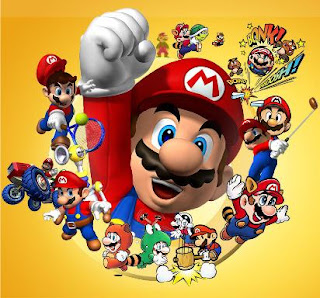Mario Melodies: Introduction
 Sunday, June 15, 2008 at 11:59AM
Sunday, June 15, 2008 at 11:59AM When I first started the Critical-Gaming blog, I used literary critical theory as a bridge to create methods, structures, and a language needed to critique videogames in a variety of different styles. In the end, some elements of literary theory were copied, some were translated, and others were dropped altogether. The whole process was a highly effective learning experience.

It's that time again. This time around, I'll be investigating level design and game progression on a level that goes beyond detailing gameplay mechanics and how they can compliment each in potential scenarios. Hopefully, I'll pioneering a way to critique the flow or movement of gameplay through a game. For analyzing an abstract series of elements to uncover larger, more complex even governing ideas, what existing method is better than music theory? I couldn't think of a better one either.
As you may have guessed, I'll be using Super Mario Bros. as a model throughout this series. Ever since I started writing critically about videogames, some games have lost their luster. But Super Mario Bros. for the N.E.S. still proves to be an example of the highest levels of videogame design. All the elements in the game come together into harmony like music. So, without further ado, here's the analogy.
- music note = individual game action/element
- music lines = categories of significant gameplay elements
- musical motif = small, often repeated sections of gameplay
- melody = sections of gameplay that have distinct endings or that are perceived as a single unit.
- music piece/song = the collection of levels, events, or sections in an ordered fashion.
So with Super Mario Brothers, the primary mechanic "jump" is analogous to a music note. The stage, enemies, and Mario are three independent musical lines. Motifs include anything from traveling down pipes, to the jump for the flag pole at the end most levels. Melodies are capped by the intro to a level and then cadence or falling action of a falling Koopa or sliding down a flag pole. Finally, all of levels from 1-1 to 8-4 make up the "musical piece" that is Super Mario Bros.
It takes more than simply understanding the analogy to truly understand the design contained in Super Mario Bros. Before we can describe how a game's elements layer together into a greater play experience, we must understand how the mechanics and elements interact on smaller more easily identifiable levels.
Continuing in the Mario Melodies series are essays on... interplay 1 2, variation 1 2 3, and counterpoint 1 2 3. Study carefully, and test your understanding of the material with the final exam. Stay "tuned."

